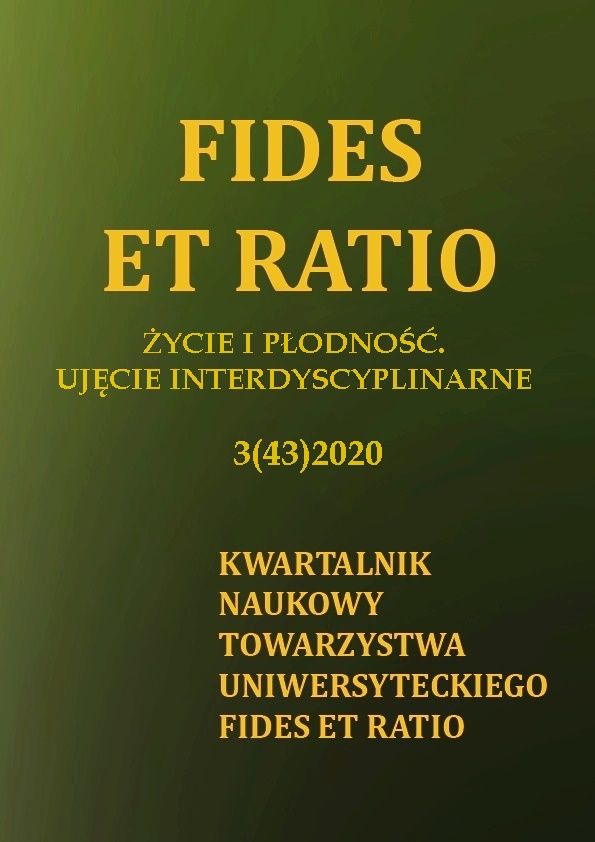Abstract
This study was conducted on a group of 604 young women aged 19-24 who are not and had never been pregnant before. The aim of the study was to analyse their attitudes towards possible pregnancy, childbirth, motherhood, health care and gynaecological care in Poland and family narratives building attitudes towards pregnancy and childbirth. An additional aim was to examine the relationship between self-esteem, self-efficiency, evaluation of the health service in Poland and traumatic birth narratives in the surroundings of the respondents and the declared desire to have
a child. Self-assessment of women was measured using the Rosenberg Self-Esteem Scale, self-efficacy was tested using the Generalised Self-Efficacy Scale (GSES). Attitudes and birth narratives were examined using a proprietary questionnaire. According to the survey, the majority of women are moderately or significantly afraid of childbirth, particularly labour complications and pain associated with childbirth. More than 75% of the women surveyed heard from their relatives about their traumatic experiences. Despite this, almost 92% of the women surveyed would like to become pregnant and give birth, and more than 90% of women see childbirth as a natural and instinctive phenomenon. Traumatic birth narratives in the family were associated with reduced GSES results. The evaluation of gynaecological care did not play a role in the development of tokophobia or in the declared desire to have a child.
References
Alehagen, S., Wijma, K., Wijma, B. (2001). Fear during labor, Acta Obstet Gynecol Scand, 80, 315-320.
Areskog, B., Kjessler, B., Uddenberg, N. (1982). Identification of women with significant fear of childbirth during late pregnancy, Gynecologic and Obstetric Investigation, 13, 98-107.
Areskog, B., Uddenberg, N., Kjessler, B. (1983). Background factors in pregnant women with and without fear of childbirth, Journal of Psychosomatic Obstetrics and Ginecology,
, 102-108.
Billert, H. (2007). Tokofobia – problem multidyscyplinarny, Ginekologia Polska, 78, 807-811.
Cekański, A. (2009). Tokofobia – lęk przed porodem naturalnym – prośba o cięcie cesarskie. Przegląd Ginekologiczno-Położniczy, 9 (2), 31–33.
Demšar, K., Svetina, M., Verdenik, I., Tul, N., Blickstein, I., Globevnik, Velikonja, V. (2018). Tokophobia (fear of childbirth): prevalence and risk factors, Journal of Perinatal Medicine, 23, 46 (2), 151-154.
Engle, P.L., Scrimshaw, S.C., Zambrana, R.E. i wsp., (1990). Prenatal and postnatal anxiety in Mexican women giving birth in Los Angeles, Health Psychology, 9, 285-299.
Fisher, C., Hauck, Y., Fenwick, J. (2006). How social context impacts on women’s fears of childbirth: a Western Australian example, Social Science Medicine, 63 (1), 64–75.
Greathouse, K.E., (2016). The "Nightmare" of Childbirth: The Prevalence and Predominant Predictor Variables for Tokophobia in American Women of Childbearing Age, Journal of Prenatal & Perinatal Psychology & Health, 31 (1), 19-44.
Guszkowska, M. (2012). Lęk przed porodem i determinujące go czynniki – przegląd literatury, Perinatologia, Neonatologia i Ginekologia, 5 (3), 154-161.
Haines, H. (2012). ‘No worries’: A longitudinal study of fear, attitudes and beliefs about childbirth from a cohort of Australian and Swedish women, Digital Comprehensive Summaries of Uppsala Dissertations from the Faculty of Medicine 843. Uppsala: Acta Universitatis Upsaliensis.
Hofberg, K., Brockington, I. (2000). Tokophobia: an unreasoning dread of childbirth: A series of 26 cases, British Journal of Psychiatry, 176, 83–85.
Hofberg, K., Ward, M.R. (2003). Fear of pregnancy and childbirth, Postgradual Medical Journal, 79, 505-510.
Hofberg, K., Ward, M. (2004). Fear of childbirth, tokophobia and mental health in mothers: the obstetric-psychiatric interface. Acta Obstetricia et Gynaecologica, 47 (3), 527–534.
Jolly, J., Walker, J., Bhabra, K. (1999). Subsequent obstetric performance related to primary mode of delivery, An International Journal of Obstetrics & Gynaecology, 106, 227-232.
Kaźmierczak, M., Sołdyńska, M., Gierszewska, M. Gebuza, G., Mieczkowska, E. (2017). Ocena lęku przed porodem u kobiet ciężarnych, Pielęgniarstwo i Zdrowie Publiczne, 26 (1), 69-75.
Levin J.S. (1991). The factor structure of the pregnancy anxiety scale, Journal of Health and Social Behavior, 32, 368-381.
Melender, H.L. (2002). Experiences of fears associated with pregnancy and childbirth:
a study of 29 pregnant women, Birth, 29, 101-111.
Paarlberg, K.M., Vingerhoets, J.J.M., Passchier, J. i wsp. (1999). Psychosocial predictors of low birthweight, British Journal of Obstetrics and Gynaecology, 106, 834-841.
Putyński, L. (1997). Lęk porodowy: jego istota i metoda pomiaru, Acta Universitatis Lodziensis. Folia Psychologica, 1, 147-152.
Ryding, E., Wirfelt, E., Wangborg, I., Sjögren, B., Edman, G. (2007). Personality and fear of childbirth, Acta Obstetricia et Gynecologica Scandinavica, 86 (7), 814–820.
Saisto, T. (2001). Obstetric, psychosocial, and pain-related background, and treatment of fear of childbirth, Academic dissertation, Department of Obstetrics and Gynecology, University of Helsinki, Finland.
Saisto, T., Halmesmäki, E. (2003). Fear of childbirth: a neglected di lemma, Acta Obstetricia et Gynecologica Scandinavica, 82, 201-208.
Sjörgen, B. (1997). Reasons for anxiety about childbirth in 100 pregnant women, Journal of Psychosomatic Obstetrics and Ginecology, 18, 266-272.
Standley, K., Soule, B., Copans, S.A. (1979) Dimensions of prenatal anxiety and their influence on pregnancy outcome, American Journal of Obstetrics and Gynecology, 135, 22-26.
Szymański, S., Brączyk, W., Konstanty-Kurkiewicz, V. (2017). Wpływ zajęć w szkole rodzenia na zmniejszenie lęku porodowego, Pielęgniarstwo Polskie, 2 (64), 232-235.
Sygulla, K., Smędowski, A., Szatan, A., Michalak, A. (2009). Problemy i oczekiwania kobiet ciężarnych dotyczące opieki okołoporodowej-czy trudno je spełnić? Problemy Medycyny Rodzinnej, 4 (29), 30-36.
Zar, M., Wijma, K., Wijma, B., (2002). Relations between anxiety disorders and fear of childbirth during late pregnancy, Clinical Psychology and Psychotherapy Journal, 9, 122-130.

